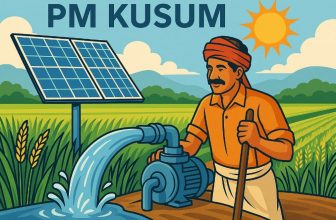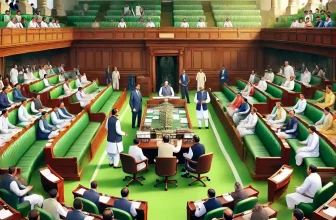The President of India is the head of state and the supreme commander of the Indian Armed Forces. Although the position is largely ceremonial, the President plays a crucial role in upholding the Constitution and democratic processes.
Since India follows a parliamentary system, the President is not directly elected by the people but is chosen through an indirect election process. Let’s break it down into simple steps to understand how the President of India is elected.
Source – https://www.eci.gov.in/faq/1/5
Step 1: Eligibility Criteria for the President
Before understanding the election process, let’s look at who can become the President of India. According to Article 58 of the Indian Constitution, a candidate must:
- Be a citizen of India
- Be at least 35 years old
- Be qualified to become a Member of the Lok Sabha (House of the People)
- Not hold any office of profit under the government (except a minister or governor)
Step 2: Who Votes in the Presidential Election?
Unlike the Prime Minister, who is chosen by the Members of Parliament (MPs), the President is elected by an Electoral College. This Electoral College consists of:
- Elected MPs from Lok Sabha & Rajya Sabha
- Elected MLAs of all State Legislative Assemblies
- Elected MLAs from Union Territories with Legislatures (Delhi, Puducherry, and Jammu & Kashmir)
Nominated members (like Anglo-Indian representatives, Governors, and MLCs) do not vote in the election.
Step 3: Weightage of Votes – Not Everyone’s Vote is Equal
Since both MPs and MLAs vote in the election, their votes are not equal. The value of votes is calculated based on:
- MLA’s Vote Value: Depends on the population of the state (bigger states have higher vote value).
- MP’s Vote Value: Total vote value of all MLAs is divided by the number of MPs.
Example: The vote value of an MLA from Uttar Pradesh (largest state) is much higher than that of an MLA from Goa.
Step 4: Nomination Process for Presidential Candidates
To become a candidate for the Presidential election, a person must:
- Get 50 MPs/MLAs as proposers and 50 MPs/MLAs as seconders
- Pay a security deposit of ₹50,000
- Submit the nomination to the Election Commission of India
Why this rule? To avoid too many candidates and ensure only serious contenders run for the post.
Step 5: How Voting Happens – The Secret Ballot System
- The election is held using a secret ballot (voters do not reveal whom they voted for).
- The voting method used is called the ‘Preferential Voting System’ (Single Transferable Vote system).
What is Preferential Voting?
- Each voter ranks candidates in order of preference (1st, 2nd, 3rd, etc.).
- If no candidate gets a majority in the first round, the second preference votes are counted.
- The process continues until one candidate gets more than 50% of the total valid votes.
Step 6: Counting of Votes and Declaration of Winner
- The votes are counted in New Delhi, supervised by the Election Commission of India.
- The candidate who gets more than 50% of the total valid votes wins the election.
- The Chief Justice of India administers the oath to the newly elected President.
Step 7: Term, Removal, and Re-election
- The President serves a 5-year term but can be re-elected.
- The President can resign by submitting a letter to the Vice President of India.
- The President can be removed via impeachment (for violating the Constitution).
Impeachment Process:
- Charges must be passed by two-thirds of both Houses of Parliament.
- The Supreme Court conducts an inquiry.
- If found guilty, the President is removed from office.
So far, no Indian President has ever been impeached.
Step 8: What Happens If the President’s Position Becomes Vacant?
- If the President dies, resigns, or is removed, the Vice President takes over as Acting President.
- A new President must be elected within 6 months.
Key Facts About India’s Presidential Elections
- First President of India: Dr. Rajendra Prasad (1950)
- Only President to Serve Two Terms: Dr. Rajendra Prasad
- First Woman President: Pratibha Patil (2007-2012)
- Current President (as of 2025): Draupadi Murmu (since 2022)
- Election Authority: Conducted by the Election Commission of India
Summary
The President of India is elected through an indirect and well-structured process that ensures representation of all states and union territories. The preferential voting system and weighted vote values maintain a fair balance between MPs and MLAs. Though the role is mostly ceremonial, the President plays a crucial part in upholding India’s Constitution and democratic principles.
Understanding this election process helps citizens appreciate the democratic system and the importance of constitutional procedures in India.





